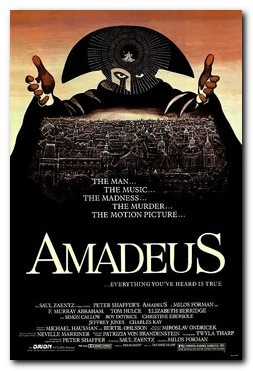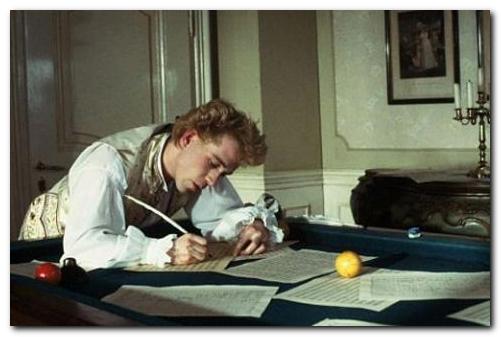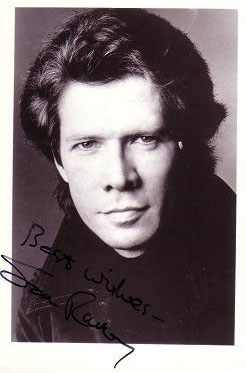 Here’s another multi-entry post about Le Nozze di Figaro, or The Marriage of Figaro. Yep, that favorite opera of mine for years now.:)
Here’s another multi-entry post about Le Nozze di Figaro, or The Marriage of Figaro. Yep, that favorite opera of mine for years now.:)
Now, how I got acquainted to this opera by Mozart is a bit of a story. In 1984, director Milos Forman made a movie based on an adaption of Mozart’s life. The movie was titled Amadeus. If you’re wondering why that title, Mozart’s full name was Wolfgang Amadeus Mozart. My memory’s a little fuzzy on this one, but I think it was my elder brother who brought tickets for the both of us to see that show.
Amadeus went on to win 40 awards, 8 of which were Academy Awards. That 8 included the Holy Trinity of Awards: Best Picture, Best Director, and Best Actor. The film ran for a whopping 3 hours and while the general gist—about an alleged rivalry between Mozart and his contemporary composer Salieri—is easy enough to follow for any movie goer, the numerous subtleties are easily missed and require repeated viewing.
As if the awards won weren’t enough, the soundtrack of Amadeus was performed by the famed Academy of St. Martin-in-the-Fields with founder and conductor Sir Neville Marriner. Bit of nugget; the stunningly beautiful music from The English Patient (yeah that movie that makes women swoon!) was also provided by this same orchestra. The Amadeus soundtrack went on to become one of the most popular classical music movie soundtracks ever, and introduced to many Mozart’s range of compositions beyond already well-known pieces like Eine kleine Nachtmusik or his Symphony No. 40 in G minor.

Now on that soundtrack there were three pieces of music that especially struck me. The first is the slow movement from the Piano Concerto No. 20 in D minor. This lovely and very gently lyrical musical piece was among the short list of music I chose for our Wedding, the music of which I think I’ll blog about soon.:)
The second is the third and fast movement from the Piano Concerto No. 22 in E Flat. Like many of Mozart’s other fast movements, the piece is dominated by a catchy and cheerful main melody that is hard to forget. I remembered heading to the old National Library at Stamford Road at all of Secondary One into the dustiest and most mite-invested section in that old institution… the classical music score section to look for the written score! My Grade VI piano-playing skills at that age was not nearly adequate to handle the piece in its entirety, but to be able to play little bits of the concerto on my old piano at Lentor is a memory I will always keep.
 The third piece of music on the Amadeus soundtrack was a stately dance “Ecco la Marcia” from the third Act of Le Nozze di Figaro, and which was itself acted out as a scene in the film proper. Now, what really made me sit up wasn’t the music number itself. Surprisingly, it was the 20 seconds of recitativo, or accompanied dialog, by the singers just prior to the dance starting. It was all in Italian mind you and I didn’t understand a word at that point then.
The third piece of music on the Amadeus soundtrack was a stately dance “Ecco la Marcia” from the third Act of Le Nozze di Figaro, and which was itself acted out as a scene in the film proper. Now, what really made me sit up wasn’t the music number itself. Surprisingly, it was the 20 seconds of recitativo, or accompanied dialog, by the singers just prior to the dance starting. It was all in Italian mind you and I didn’t understand a word at that point then.
But the singer was Samuel Ramey who alongside Welshman Bryn Terfel possesses the most sexy and manly voice you’ll ever hear. That baritone voice of his will send you to Amazon.com to look for his CDs while dumping all your Josh Groban and Russell Watson albums along the way.
Now while I couldn’t understand what he was singing, the enunciation and dynamics of the sung dialog gave me all sorts of hints as to what the story could be about that was being set to such stunning music. And that was my first introduction to classical opera.:)
More on Figaro in the next entry.:)